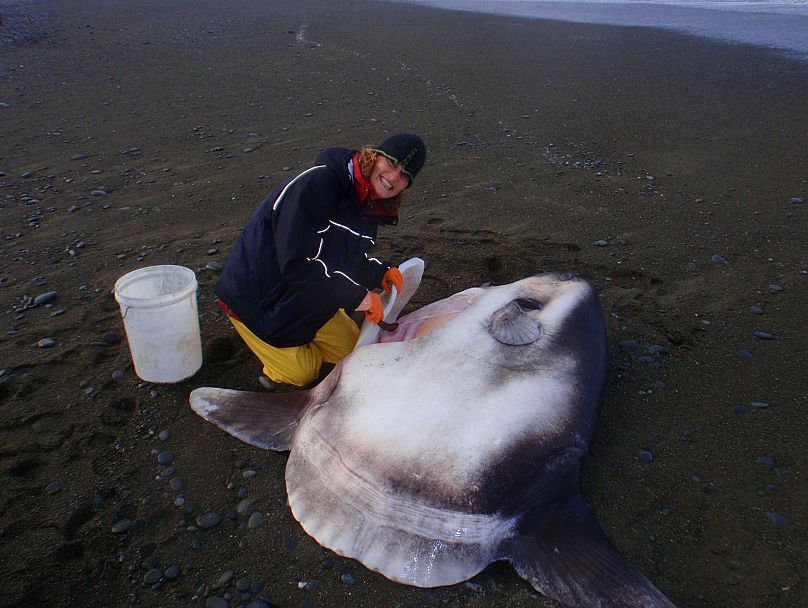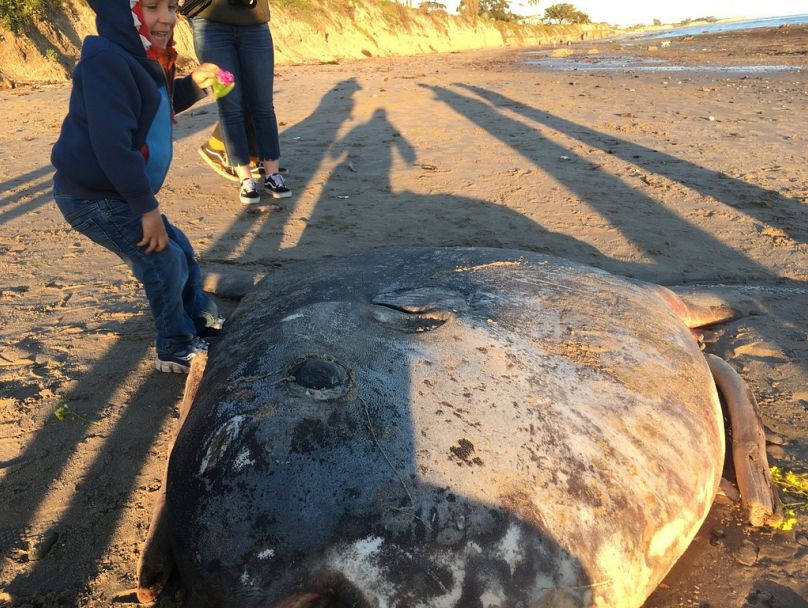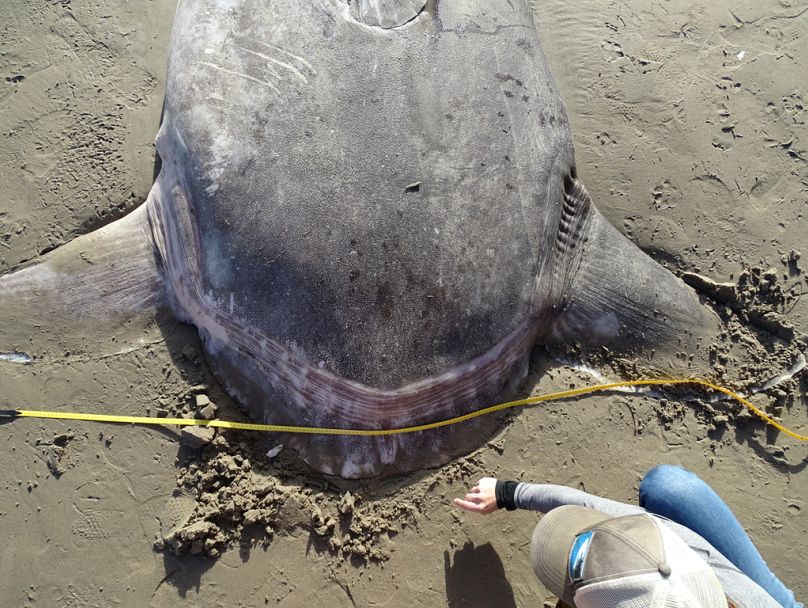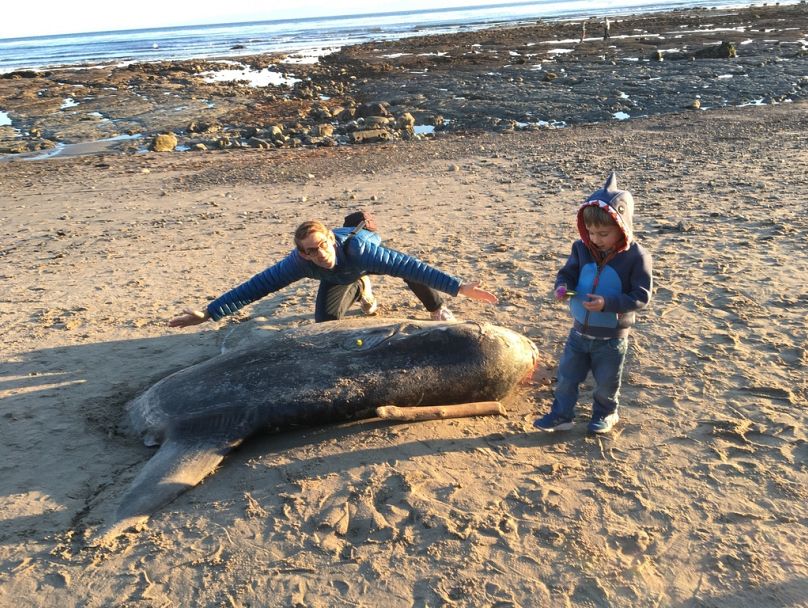An enormous hoodwinker sunfish, also known as Mola tecta, mysteriously washed up on a California beach over 10,000 kilometres from its usual habitat off the coast of New Zealand.
An enormous hoodwinker sunfish, also known as Mola tecta, mysteriously washed up on a California beach over 10,000 kilometres from its usual habitat off the coast of New Zealand.
Weighing up to two-tons and two metres in length, the rarely spotted Mola tecta are thought to be the world's largest bony fish.
The alien-like fish was initially thought to be a Mola mola when spotted on the University of California's Coal Oil Point Reserve on February 19, until days later when Australian scientists confirmed it was actually a larger species of sunfish.
The mysterious Mola tecta species was only recently discovered in 2014 after a four-year search to locate the elusive sunfish, becoming the first new species of sunfish to be identified in 130 years.
Prior to the initial discovery of Mola tecta, a team of researchers led by Marianne Nyegaard, a PhD student at Murdoch University in Australia, analysed more than 150 sunfish DNA samples and recognised four distinct species—but only three of the species had been previously identified.
From this DNA, Nyegaard believed that there was an additional sunfish species that hadn’t been documented, which led them to the name "hoodwinker sunfish," or Mola tecta, which comes from the Latin word tectus, meaning hidden.
In 2014, Nyegaard got a tip from a New Zealand fishery that four sunfish had washed up on a beach in Christchurch, New Zealand confirming the existence of the hoodwinker sunfish.
Since the discovery, researchers have located the hoodwinker sunfish in New Zealand, off Tasmania, south Australia, South Africa, and southern Chile but this is the first time Mola tecta has been spotted on the North American coast.















